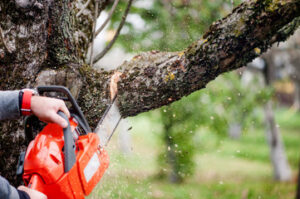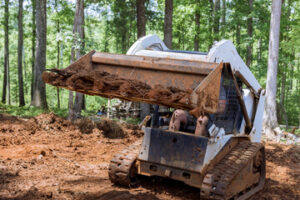When the temperatures start to climb, you want your AC to keep you cool. To do that, it needs to function properly. This article discusses common AC problems and easy at-home fixes to get you back to refreshing air.

When dirt coats the evaporator coil, your home won’t cool. AC Repair Round Rock technician can clean this coil during a routine AC maintenance visit.
Your thermostat controls your heater and air conditioner, so when it malfunctions, the system will stop functioning properly. A broken thermostat may indicate bad wiring, which requires a professional to repair. Or, it could simply be reaching the end of its life and needs to be replaced. The good news is that a new thermostat will help save energy costs and improve comfort, so this fix is worth the investment.
Your HVAC technician may also diagnose a problem with your control board. This important part of the system sends signals to the blower and compressor, telling them when to start up and shut down. A faulty control board can disrupt these vital communications, leading to a system that won’t turn on even though other parts are working fine.
A common cause of a failed control board is thermal expansion. This occurs when a soldering connection between the plugs and circuit board changes shape due to heat, creating gaps. A faulty connection can lead to a short circuit, which can then trigger the breaker to trip repeatedly. Inspecting the board with a multimeter and conducting electrical tests can pinpoint the source of the issue.
Another possible reason for a failing control board is internal damage. Blown fuses, water leaks and other problems in the system’s internal components can prevent it from starting up correctly. Professional technicians can determine if repairs are possible or if the unit should be replaced.
A tripped breaker can occur for any number of reasons, and it’s often caused by overworking the system during a hot day. But it can also be a sign of other, more serious issues, such as dirty sensors or a blocked condensate drain. When this happens, the breaker will trip again and again, forcing you to reset it every time. These problems usually require expert attention, and a professional inspection can catch them before they get worse. This can save you money in the long run and ensure that your AC runs reliably throughout the summer.
Capacitor Damage
The AC capacitor is a cylindrical component that sends energy to your air conditioner’s motor. Like any part of your home’s cooling system, it can wear down and break down over time with normal use. You should watch out for a variety of signs that your AC capacitor is on the fritz and in need of replacement.
A broken AC capacitor can have a serious impact on your comfort, leading to inconsistent or even nonexistent cooling in your home. This is because the capacitor provides the initial energy boost that helps start your compressor and condenser fan motors. If this little power-pack fails, the motors will struggle to operate properly and may even overheat or shut off completely.
Fortunately, you can avoid many AC capacitor problems by being aware of the warning signs and scheduling regular maintenance. In general, your capacitor should last about 10-20 years before it starts to degrade and need to be replaced. However, this lifespan can be significantly shortened with daily wear and tear, heavy use, and high outdoor temperatures.
Some of the most common AC capacitor symptoms include:
The Metal Terminals Can Rust
If the metal terminals on your AC capacitor start to rust, this is a sign that they are worn out and need replacing. Additionally, a swollen end on the cap is also a strong indicator that it needs to be replaced.
Capacitors Can Leak
A failing capacitor can leak oil or other contaminants that will cause damage to other parts of your air conditioning system. This can make the problem worse and require more extensive and expensive repairs.
It’s important to hire a professional when it comes to repairing or replacing your AC capacitor. A licensed and experienced HVAC specialist can help you choose the right voltage and microfarad rating to ensure your air conditioning system is operating at peak performance and efficiency.
The best way to keep your AC running smoothly is to maintain it regularly with routine maintenance and call for professional AC repair when necessary. A qualified technician can spot any issues and help you fix them before they become a big problem.
Refrigerant Leaks
Refrigerant is the chemical that cools your home, absorbing heat and turning back into a low-pressure gas. Your AC unit moves it through the copper coils as a fan blows air over them. When the system is working properly, refrigerant will move out of the coils into a condensate drain pan or into one of the service ports. If the system develops a leak, it will lose refrigerant and your cooling performance will suffer. A refrigerant leak causes your system to work harder and use more energy, increasing your cooling costs and potentially leading to other component damage.
Leaks can also create a health hazard and require quick professional repair to avoid further issues. If the leaks are not corrected in time, your compressor can seize up, resulting in expensive repair or even a replacement system. Choosing the right air conditioner contractor to manage refrigerant repairs is crucial for long-term efficiency and reliability.
A skilled HVAC technician will utilize refrigerant leak detection tools to pinpoint the problem and evaluate whether a repair or replacement is the best option. They will also recharge your system with the correct type and amount of refrigerant to ensure long-term efficiency and performance.
The first signs of a refrigerant leak are usually hissing sounds and ice forming around the condenser and coil lines. Other indicators include unusual odors or inconsistent cooling throughout your home. Homeowners can help prevent hissing noises, uneven cooling and other problems by scheduling routine maintenance services and monitoring their homes for warning signs.
Leaks can occur anywhere in the system, but they are most often located near the service valves and caps, compressor seal, or fittings where a rubber line is crimped onto a metal line. HVAC professionals have a variety of leak-finding tools at their disposal, including blacklight and fluorescent dye. The dye is added to the system fluid and, when activated by a blacklight, highlights the leak area for easy repair.
It’s important to rely on a licensed and experienced HVAC contractor for AC repair. Attempting DIY air conditioner repair can lead to further damage and may invalidate your warranty. It’s also a good idea to schedule regular maintenance inspections, which can spot potential problems before they become major repairs.
Clogged Air Filters
Changing your filter is one of the most important things you can do for your HVAC system. This simple task can save you energy, money and discomfort, as well as extend your equipment’s lifespan. However, it’s not the only thing you should do to keep your system in top condition. Regular professional maintenance is also essential. Our trained technicians can perform a thorough inspection and tune-up, helping you avoid AC repair and increase your system’s efficiency.
When an air filter is clogged, the blower fan has to work harder to circulate air throughout your home. This increased energy use can lead to higher energy bills and wear and tear on your equipment. It can even cause the internal components of your system to overheat.
Over time, dirt and debris accumulate on the air filter. When the filter becomes too dirty, it restricts airflow, causing your system to overwork itself and shortening its lifespan. Airflow restrictions can also damage your furnace’s heat exchanger, resulting in costly repairs or replacement.
The blower motor has to work harder to pull air through a clogged filter, and the evaporator coil can freeze due to restricted airflow. When the evaporator coil freezes, it will not be able to absorb heat and cool your home, leading to a system shutdown. Changing your air filter regularly can prevent this issue from occurring and help you avoid expensive repairs.
Air filters are essential for good indoor air quality, but they can become clogged with lint, pet hair, dust mites, mold spores and dead skin cells. When these contaminants are allowed to recirculate in your home, they can cause unpleasant symptoms for you and your family, including flu-like effects, asthma and allergies.
A clogged filter can also result in uneven heating, causing hot and cold spots in your home. Because the blower motor has to work so hard to push air through a dirty filter, it cannot distribute the heated air evenly. This can be a significant safety hazard, especially for children and the elderly. Changing your air filter regularly is a simple, inexpensive way to prevent these problems and ensure your home stays comfortable.








